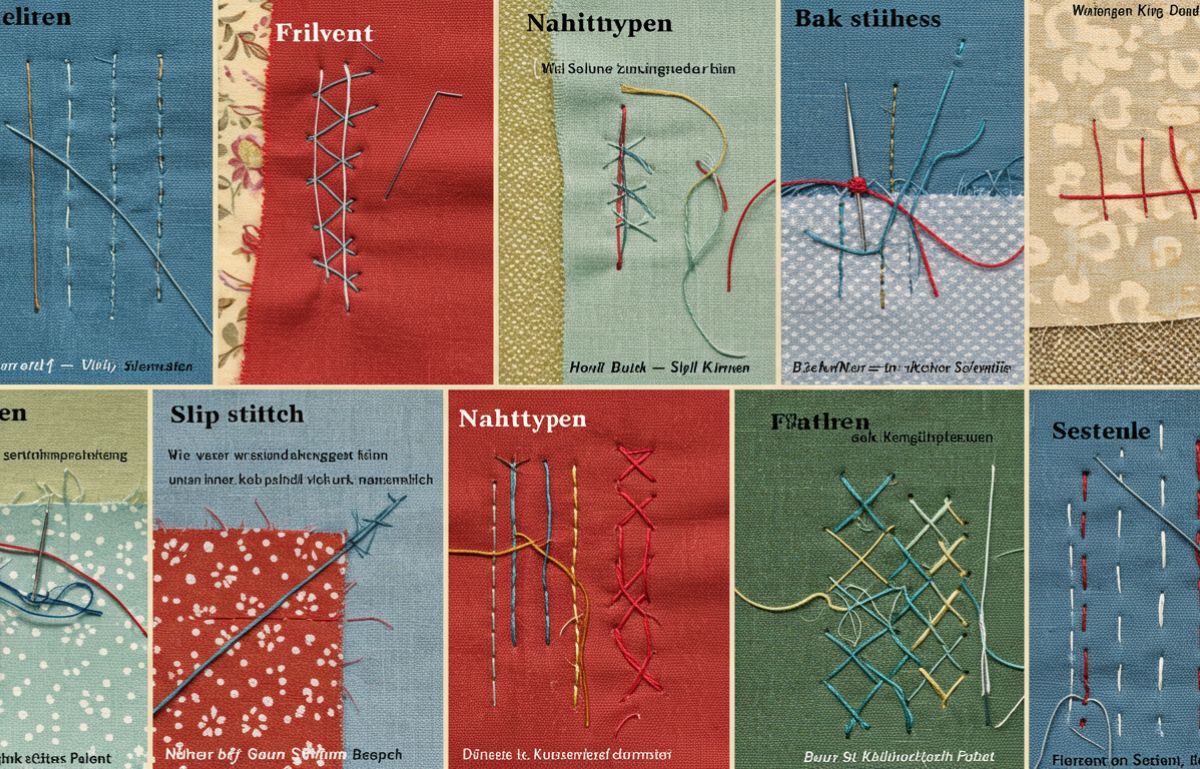The term Nahttypen refers to various types of stitches or seams used in sewing and garment construction. Each stitch type has a specific function, whether for strength, flexibility, design, or finishing. In both industrial and home sewing, understanding different Nahttypen is essential to ensure quality, longevity, and appearance of the final product. From decorative stitches to reinforcement seams, these stitch variations influence how clothes fit, feel, and function.
The Importance of Knowing Nahttypen
Understanding Nahttypen isn’t only for professional tailors and designers. Even hobby sewists benefit from knowing which stitch type works best for a specific fabric or garment. Proper application of Nahttypen can:
-
Improve garment durability
-
Enhance comfort and fit
-
Prevent fabric fraying
-
Add decorative elements
-
Allow for fabric stretch or movement
Choosing the wrong stitch can lead to torn seams, poor structure, or an unprofessional look. Therefore, mastering basic Nahttypen is a valuable skill for anyone involved in sewing or fashion.
Classification of Nahttypen (Stitch Types)
There are several classifications of Nahttypen based on function, technique, and placement. Below are the most common types categorized for easy understanding:
Straight Stitch (Geradstich) – The Foundation of All Nahttypen
The straight stitch is the most fundamental and widely used stitch in sewing. It is ideal for most non-stretch fabrics and creates a clean, straight seam. This type of stitch is often used in structural parts of garments.
Uses:
-
Side seams
-
Hems
-
Topstitching
Advantages:
-
Simple to execute
-
Strong for woven fabrics
Zigzag Stitch – A Flexible Nahttyp for Stretchy Fabrics
Zigzag stitches are known for their flexibility and are commonly used on knit or stretch materials. The stitch allows for fabric movement without breaking the seam.
Applications:
-
Elastic waistbands
-
Buttonholes
-
Decorative edging
Benefits:
-
Prevents unraveling
-
Adds stretch capacity to the seam
Overlock Stitch (Overlocknaht) – Professional Finish for Seams
The overlock stitch is a special Nahttyp that sews and trims the fabric edge at the same time. This is particularly useful for finishing raw edges and is often done with a serger (overlock machine).
Best For:
-
Professional finishing
-
Knit fabrics
-
Avoiding fraying
Pros:
-
Clean, factory-like finish
-
Extremely durable
French Seam (Französische Naht) – A Clean and Concealed Nahttyp
A French seam is a two-step seam where the raw edges are enclosed, making it perfect for delicate or sheer fabrics. This Nahttyp is often seen in high-end garments due to its neat appearance.
Use Cases:
-
Blouses
-
Lingerie
-
Lightweight fabrics
Why Use It:
-
Durable and elegant
-
No visible raw edges
Flat-Felled Seam – Heavy-Duty Nahttyp for Strength
Flat-felled seams are most commonly used in jeans and workwear. The seam is stitched twice, with fabric edges enclosed, offering a clean look from both sides and enhanced strength.
Commonly Found In:
-
Denim jeans
-
Shirts
-
Outdoor gear
Advantages:
-
High durability
-
Double reinforcement
Blind Hem Stitch – A Discreet Nahttyp for Formal Wear
The blind hem stitch is a nearly invisible stitch used to hem pants, skirts, and dresses, especially in formal or business attire. It’s done with a specific blind hem foot on a sewing machine or by hand.
Applications:
-
Dress hems
-
Trousers
-
Curtains
Why It’s Great:
-
Hidden appearance
-
Professional look
Topstitch – A Decorative and Functional Nahttyp
Topstitching is done on the visible side of the fabric and serves both decorative and functional purposes. It strengthens the seam and can be a design element in jackets, jeans, and bags.
Usage:
-
Bags and accessories
-
Decorative garment elements
-
Collar edges
Strengths:
-
Adds visual interest
-
Reinforces seam strength
Choosing the Right Nahttyp for Your Project
When deciding which Nahttyp to use, consider the following:
-
Fabric Type: Lightweight fabrics require gentle seams like French seams, while heavy-duty materials need strong stitches like flat-felled seams.
-
Garment Purpose: Is the garment decorative, functional, or both? This impacts whether you prioritize aesthetics, strength, or stretch.
-
Sewing Machine Capability: Not all machines can perform every Nahttyp. Some require special feet or attachments.
Modern Innovations
With advances in textile technology, new stitching types have emerged. These include laser-sealed seams, ultrasonic bonding, and computerized embroidery stitches. While not traditional Nahttypen, these innovations serve similar functions and continue to push the boundaries of garment design.
Common Mistakes in Applying Nahttypen
Beginners often make the mistake of using a one-size-fits-all approach to stitching. Here are a few errors to avoid:
-
Using a straight stitch on stretch fabric (causes seam breakage)
-
Ignoring fabric grain when applying topstitch
-
Forgetting to secure seams at start and end (can lead to unraveling)
Understanding the function and correct application of Nahttypen can eliminate these issues.
Maintenance and Repair of Nahttypen
Even the best stitches can wear out over time. It’s important to know how to identify and repair different Nahttypen. For instance:
-
Straight Stitch Repairs: Reinforce with backstitching
-
Zigzag Fixes: Re-stitch the same pattern over the damaged area
-
Overlock Reseaming: Use a similar machine or trim and resew with a zigzag stitch if a serger isn’t available
Proper maintenance extends garment life and maintains its original structure.
Final Thoughts
Nahttypen play a critical role in sewing, garment construction, and fashion design. Each stitch type has unique characteristics that make it suitable for specific applications. Whether you’re a beginner or a professional, understanding and mastering different Nahttypen ensures better outcomes in your sewing projects.
By learning how to choose and apply the correct stitch type, you elevate the quality of your work, both in durability and appearance.
